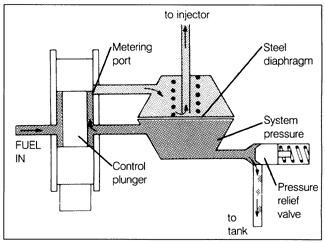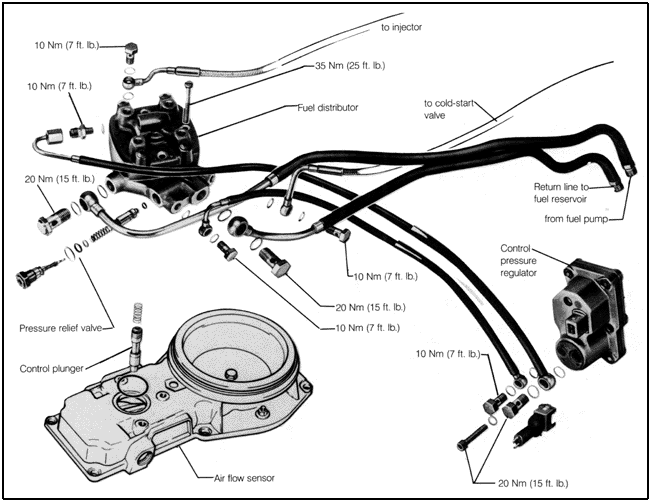Fuel DistributorThe fuel distributor's control plunger, moving up or down in its cylinder, uncovers or covers the metering ports leading to the four metering valves-one for each injector. The metering valves maintain a constant pressure differential for precise control at all fuel flow rates. A cross-section of one metering valve is shown in Fig. 5-4.

The fuel distributor is not normally a source of problems. It is, however, a precision device that is easily damaged by plugging or corrosion from contaminated fuel. For fuel filter maintenance information, see LUBRICATION AND MAINTENANCE. On some cars, a mini-filter is installed during manufacture in the fuel inlet bolt at the fuel distributor. This filter should be removed and a normal bolt installed in its place at a specified interval. For more information on identifying and replacing the mini-filter, see LUBRICATION AND MAINTENANCE. Check fuel distributor function by measuring injection quantity, as described in 4.7 Fuel Injectors (CIS, CIS-E, and CIS-E Motronic). Fig. 5-5 illustrates the fuel distributor's fuel line connections and mounting detail. If either the fuel distributor or the air flow sensor is repaired or replaced, the idle speed and idle mixture (% CO) should be adjusted. See 5.6 Idle Specifications (RPM and % CO). Before making the adjustments, make sure the air flow sensor plate position is correctly adjusted as described above in Air Flow Sensor. To remove and clean the control plunger, remove the two mounting screws from the top of the fuel distributor and pull the fuel distributor from the air flow sensor assembly. Remove the control plunger and clean it with carburetor cleaner or equivalent. Lubricate the control plunger with a light coat of fuel and reinstall it with the small end facing down toward the air flow sensor plate lever.

|